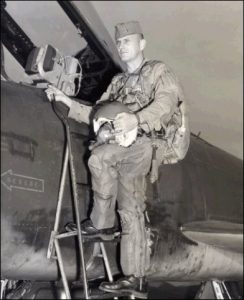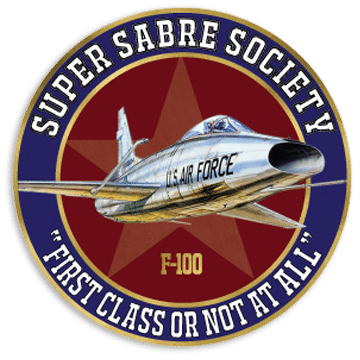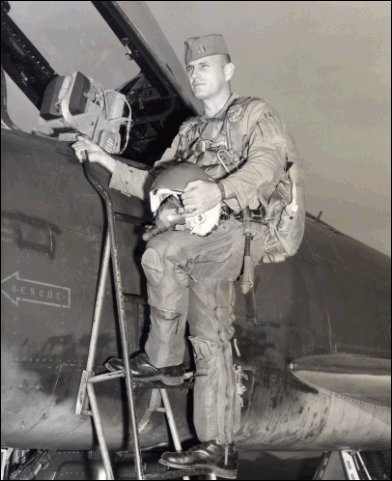 John Lewis – Caterpillar Club
John Lewis – Caterpillar Club
14 February 1968
We were scrambled from the Bien Hoa alert pad that evening to a target in IV Corps. The FAC had located a “Quad 50” type gun platform on an island in the Mekong river Southeast of our base at Bien Thuy.
After we were briefed on the target we set up a standard traffic pattern type procedure as we turned off all exterior lights. We were carrying Mk82 Hi-Drags, well suited for this night target.
We each made a hot pass but failed to knock out the guns. My position was abeam the target on downwind when lead was on his second pass. Tracers were visible as he made his run. This made the target location easy to spot and chances of destroying the guns excellent.
I released another Mk82 on my second run followed by an immediate pull-up. As I crossed over the target something impacted the aircraft. Moments later the hydraulic pressures went to ZERO and the stick went limp in my hand. All that was left were the cables to the rudder and engine power. A skidding left turn was made back up the river toward Bien Thuy. The throttle was almost all the way forward but not in burner. It was necessary to use that much power to keep the aircraft from descending. Speed was high but just how high I’ll never know. The first plan was to lower the tail hook and make a long straight-in approach to a landing at Bien Thuy with hopes of engaging the barrier. This plan was abandoned almost immediately as there wasn’t enough control available.
My next plan was to vector the crippled aircraft directly over the base, eject, let the aircraft continue on into the jungle while I drifted down into the arms of friendlies. That plan was also abandoned a few minutes later when the fire that was burning under the fuselage melted the rudder cables.
The ejection sequence was initiated as the aircraft began to roll inverted. All that training about how to position yourself prior to ejection was forgotten in the heat of the moment. When the cables failed my left leg continued all the way forward and the ejection was made from that position.
The wind blast ripped away my visor but not the helmet. Seconds later the parachute opened with a violent jolt. Fortunately, the equipment worked perfectly and withstood the incredible loads of the high speed ejection.
Landing occurred in an open field across the Mekong river from Bien Thuy. The alert “Pedro” HH-43 Huskie helicopter based there had already been scrambled and was airborne en-route to my location. They picked me up and transported me to Bien Thuy without incident.
Through the help of a great guy, Ed Cartwright, of the Pedro Rescue Helicopter Assn I was able, after some forty years, to find the names and contact information of the crew that rescued me. Pilots Larry Conover , Les Johnson, and Crew Chief/FE Gordon Browning from Detachment 10 of the 38th ARKS at Bien Thuy are to be commended for my rescue and numerous others during that period.
My Mk82 did find it’s target that night and the Guns were destroyed but at the cost of my trusted F-100D and about 10 years off my lifespan. A C-47 flew down the next day and returned me to base.
All things considered my condition was quite good. Injuries included bruised and beaten up legs, some cuts to my face and the whites of both eyes completely bloodshot which didn’t go away for weeks.


